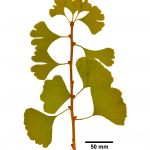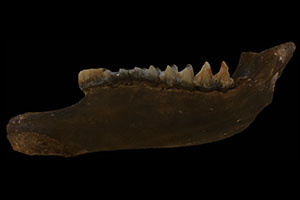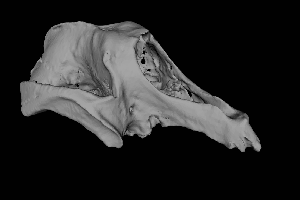Section 1: Climate during the Triassic
These specimens are from the Triassic Blackstone Formation of the Ipswich Coal Measures, southeast Queensland, Australia. Although the diversity here is dominated by species of Dicroidium (extinct seed ferns), the slabs also preserve species of ginkgos and cycads.
The palaeo-flora from this particular fossil site was examined recently by a former UQ PhD student, (now) Dr Gary Pattemore. (See here for a detailed investigation of Gary’s work)
Click here to see a full screen 3D model of the Triassic fossil plants.
Modern native plants of southeast Queensland (click to enlarge):
Below is the modern ginkgo, Ginkgo biloba. It is the only ginkgo left on the planet and is today used as a common ornamental plant, although it is extinct in nature (click to enlarge):
Section 2: Coral weather guages


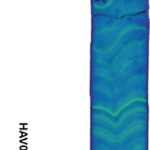
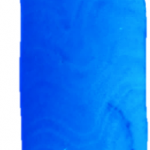
Section 3: Shape-shifting marsupials
The Excel file here will allow you to estimate the mass in kilograms of a range of extinct Australian marsupials. For herbivores, all you need to do is measure either the occlusal molar row length (lower jaw or upper jaw) and enter that datum into the the spreadsheet (be sure that you enter your data into the relevant cell). The estimated weight will then be calculated for you. The critical measurement for the carnivorous marsupial ‘lions’ is the width of the upper premolar.
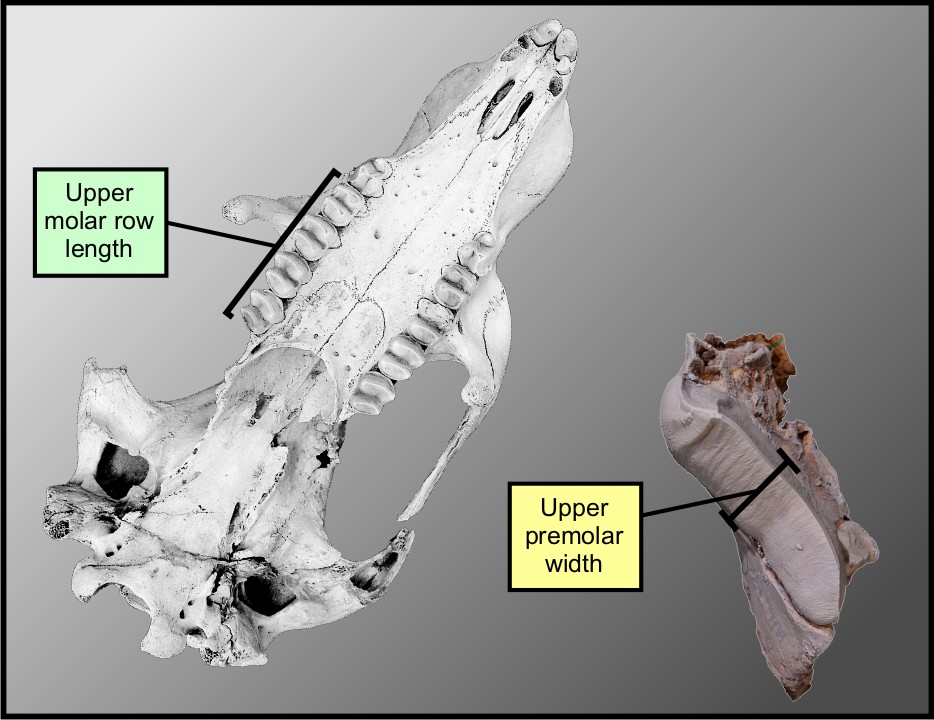
The equations used in the file were developed by Myers (2001). For the full paper, please see: Myers, T.J., 2001. Prediction of marsupial body mass. Australian Journal of Zoology 49, 99-118.
Using your computer, measure the virtual specimens below (click thumbnail image of the fossils to open the 3D model; access the measuring tool by clicking the ruler in the top left of the window). Be sure to note what you are measuring in terms of species and tooth row type (upper and lower) and make sure to use the correct regression in the Excel spreadsheet to calculate the weight. Enter that measurement into your worksheet.
Macropodoids (Kangaroos, wallabies and ancestors)
Macropodoids have a ca. 25 million year history in Australia. The earliest ancestors are thought to have scurried around on all-fours, rather than hop like modern kangaroos. The largest-ever kangaroos were just described in the scientific literature last week! They are though to have reached over 2.5 m in height and weighed in excess of 270 kg. The below is a 3D reconstruction of the giant kangaroo. If you’re interested, you can see the original scientific paper here, or a general article reporting the discovery in The Conversation here. This work came from a collaboration of reserachers across Austalia including at UQ.
Click here to see a full screen 3D model of a reconstruction of the largest-ever kangaroo.
Diprotodontoids (extinct wombat-like marsupials)
Diprotodontoids had their earliest origins around 25 million years ago. Although they are often consider to be ‘wombats’, they are actually evolutionarily separated from them by tens of millions of years. And unlike wombats, the last members of the entire family suffered extinction sometime in the late Pleistocene (around 40,000 years ago). They were herbivores and ranged greatly in body size from sheep to rhinos. The below is a 3D reconstruction of Diprotodon optatum, not only the largest member of the family, but also the largest marsupial that ever lived.
Click here to see a full screen 3D model of a reconstruction of Diprotodon optatum.
Thylacoleonids (Marsupial ‘lions’)
Thylacoleonids are often considered to be lions, but they are actually marsupials that are most closely related to wombats. Similar to macropodoids and diprotodontoids, they also have their earliest origins around 25 Ma. They are also world record holders in that they were the largest-ever marsupial predators known, markedly larger than both Tasmanian devils and the Thylacine. The below are reconstructions of Thylacoleo, a genus described by Sir Richard Owen (the scientist that coined the term ‘dinosaur’) as “one of the fellest and most destructive of predatory beasts” (Owen, 1859).
Click here to see a full screen 3D model of a reconstruction of marsupial lion skulls.
Section 4: Tiny time trackers
Radiolaria are a type of zooplankton that have silica-based skeletons (unlike your skelton that is calcium phosphate). They are extremely small (01.-0.2 mm), diverse, and evolve rapidly, especially after mass extinction events. As such, they make ideal fossil for biostratigraphy (i.e., the branch of science that deals with the correlation and dating of strata using contained fossils). The oldest radiolaria are Cambrian (ca. 500 Ma). The below is an example of a modern radiolarian.
Click here to see a full screen 3D model of a radiolarian.
See the image below for radiolaria from a deep sea core drilled from the Indian Ocean, off the western coast of Sumatra, Indonesia. They were drilled by a team aboard a International Ocean Drilling Program (IODP) ship that included former UQ PhD student, (now) Dr Sarah Kachovich.
Sarah’s research specialty is in using radiolaria for biostratigraphy. The drill cores were logged (i.e., described for their geology) and digested (i.e., broken-down) using various acids. The acid is enough to dissolve the cements that bind the fine particles, but do not digest the radiolaria.
Sarah then sifted through the loose sediments and picked out the individual radiolarian fossils using a microscope. The images below show the actual boat used during the scientific voyage and Sarah (in yellow) as she analysed the cores whilst still onboard the boat.
These specimens were imaged by Sarah using a scanning electron microscope (SEM). Click the thumbnail image below to enlarge. How many morphospecies can you recognise? How old are the rocks that preserve these specimens? (see your prac notes for a guide of the biostratigraphically-useful morphospecies).
Credits:
Kaylene Butler (UQ): Nambaroo gillespieae, Ganguroo robustiter,
Nathan Siddle (UQ): Protemnodon anak, Diprotodon optatum, Thylacoleo crassidentatus
Bennett and Goswami (2012): Balbaroo fangaroo, Balbaroo nalima, Wanburoo hilarus, Sthenurus andersoni, Rhizosthenurus flanneryi (see here for full paper)
Sharp (2016): Neohelos, Zygomaturus, Propalorchestes (see here for full paper)
Dr Sarah Kachovich ( Texas A&M University): Radiolarian images




